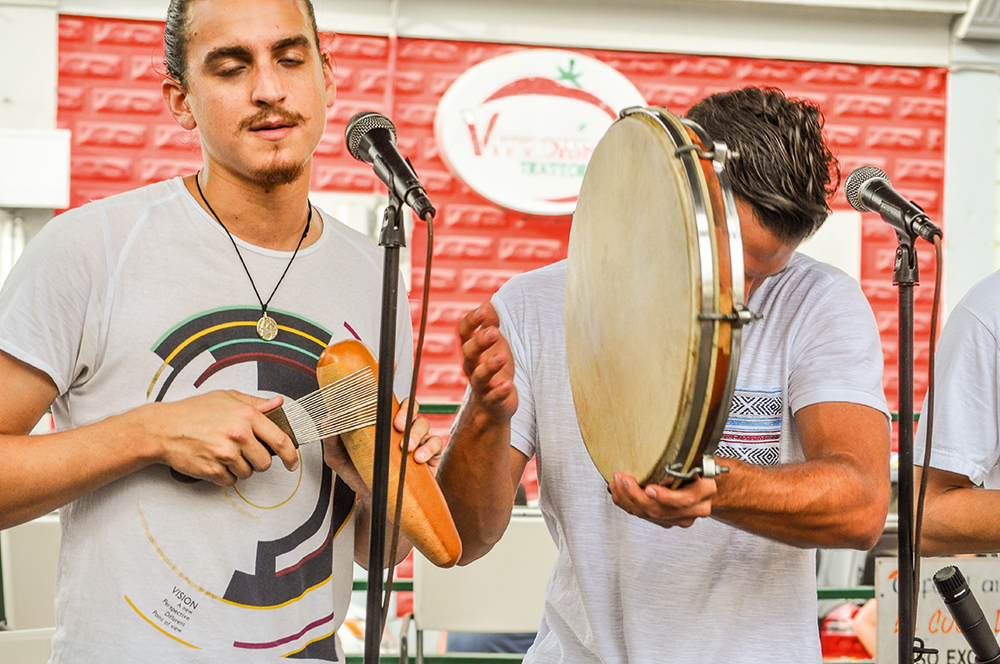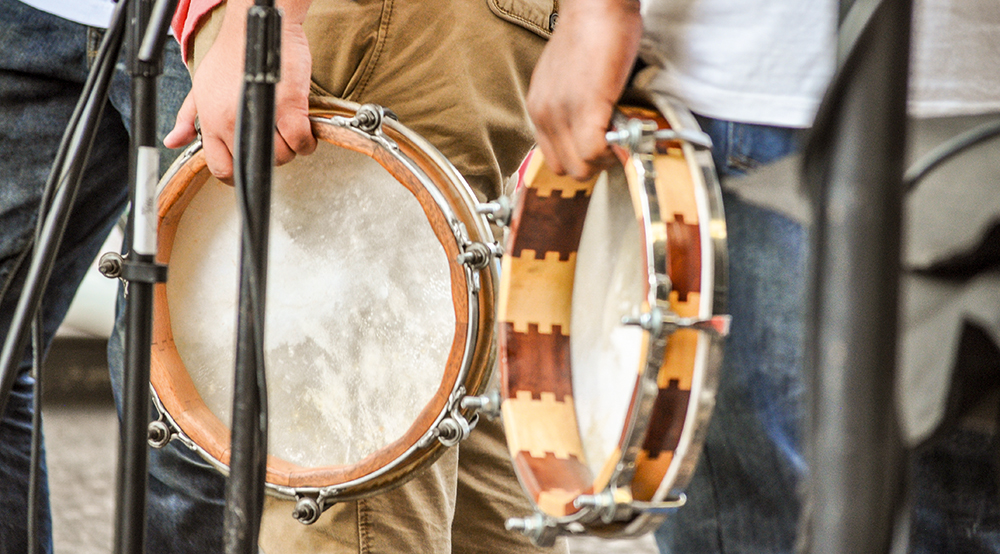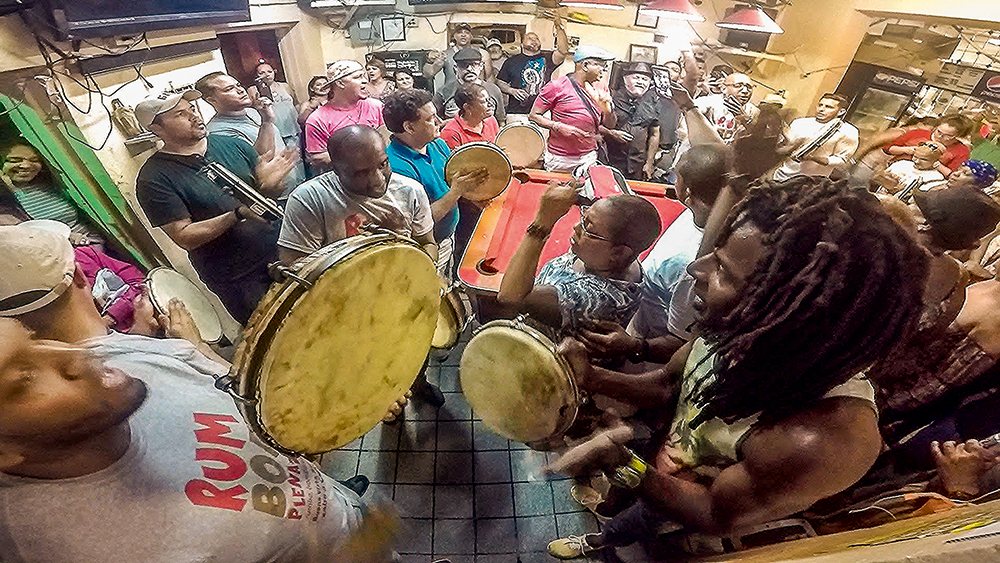My dissertation Plena in San Juan, A Musical and Social Phenomenon in Urban Puerto Rico is the centrepiece of my doctoral studies in urban ethnomusicology at the Department of Folk Music Research and Ethnomusicology under the supervision of Ursula Hemetek. My work focuses on the study of plena—a genre of Afro-Caribbean traditional music—and its performance in San Juan, the capital city of Puerto Rico. The main goal of my project is to use fieldwork to document the different social settings of plena performances in selected neighbourhoods of San Juan. Examining the contexts of performances is key to understanding how plena changes and transforms itself from one space to the next and how surrounding sounds and different musics influence it. I collaborate with a small group of musicians as they perform throughout the city. These places can range from official stages to informal, improvised settings in working-class neighbourhoods and on barrio corners.

I challenge previous research on plena that has viewed plena as a homogeneous genre, assuming that there is only one plena. If plena is an urban phenomenon, the dynamics of plena should be diverse as the people who perform it. Therefore, I not only document performances as an outsider, but also conduct extensive interviews to explore the viewpoints of insiders—which is to say: the plena-performing community—in order to understand their purpose, motivation, and perspective. I examine what it means to be a plenero (plena player), which literally translates as an “avid plena follower or player” but also goes beyond just one’s passion for the genre to include being a teacher and a community activist who can encourage others to participate in music-making. I also attempt to understand the motivations to perform and the individual trajectories of some members of the plena community in becoming pleneros.
What is Plena?
Plena is a type of song performed over a specific rhythmic foundation. Its particularity lies in the sound of the instrumental rhythmic patterns, in the form and content of its songs, and in the social dynamics that occur as part of its performances.
The rhythmic foundation of plena is played by the güicharo, an idiophone instrument that is played by scraping a metal comb or fork called puyero against the small ridges carved into a dried higüera fruit (similar to a small squash) as well as by three different sized panderos or panderetas, which are handheld frame drums (see figure 1–2). Plena rhythm is based on multiple patterns that provide the foundation for the singing (Dufrasne 2003). Anthropologist Ramón López points out that one of the unique elements of plena is that its instruments are entirely portable and can be played standing or even walking (2008). Furthermore, saxophonist Miguel Zenón, in looking back upon his plena/jazz album Esta Plena (2009), describes plena not only as portable but also as a way to convey or move a message from one point to another in the form of a song (interview, 20 August 2014).

Plena is sung in a call-and-response manner in which the singer calls a refrain from the coro or choir and then alternates with them, performing improvisations on the content of the song. Plena rhythm is used to accompany different types of songs that vary greatly in their textual content. Scholar Malena Kuss has described such content as follows: “(a)s the neighbourhood’s journal, plena is Puerto Rico’s most popular form of social commentary. Through improvised or learned poetry, […] repeated indefinitely in responsorial style, historical memory is recorded in song” (2007: 169). Collective memory is then formed through repetition; it reports on events and tells stories that, years later, still resonate in the form of plena songs.
Plena Performances: Plenazo
Essential to the character of plena is its performance setting. One of these, by way of example, is the plenazo. Organised by the plena community, plenazos are open plena meetings or jam sessions held in public spaces around the city (such as squares or parks or even parking lots) to commemorate a plenero or an important local community figure, to celebrate a particular event, to raise awareness about an issue, and to learn about the practice and history of plena. The organisation of such events brings together musicians, local leaders, and municipal authorities and also involves the community at large. These performances rely on the participation of those attending the event, who gather in numbers ranging from just a few to a hundred or more participants.

Everyone is welcome to participate by singing, playing, or dancing. The main purpose of a plenazo is not only to come together as a community, to provide entertainment, and/or to build awareness about socio-political issues, but also to educate. It gives the average player the opportunity to meet, learn from, and play with master pleneros, thus guaranteeing continuation of the cycle of learning plena and providing motivation for those new to the genre to join in (Matos & Reyes 2012).
The plenazo is just one example of the numerous plena settings that I study. All of these settings have their own social dynamics and vocabularies of music improvisation that, in their multiplicity, form the plena landscape of San Juan.
Literature:
- Dufrasne, Emanuel, 2003. “Plena Vieja, Plena Nueva” in Musical Cultures of Latin America, Steve Loza (ed.): Global Effects, Past and Present, Proceedings of an International Conference University of California, May 28–30, 1999. Los Angeles: Ethnomusicology Publications Department of Ethnomusicology and Systematic Musicology, pp. 129–140
- Kuss, Marlena, 2007. “Puerto Rico in Music in Latin America and the Caribbean” in An Encyclopedic History: Volume 2 Performing the Caribbean Experience. University of Texas Press, pp.150–188
- Lopéz, Ramón, 2008. Los Bembeteos de la Plena Puertorriqueña. San Juan, PR: Ediciones Huracán.
- Matos, Hector and Reyes, Mariana, 2012. Plenazos Callejeros. San Juan, PR: Documentary Film Produced by Viento de Agua Inc.
- Zenón, Miguel, 2009. Esta Plena. Cambridge MA, USA: Marsalis Music.
Further information on mdw’s Disskolleg:

